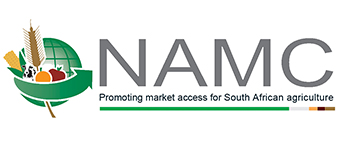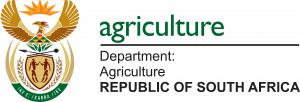CEO’s Desk – First half promising

12 May 2022 will forever be etched in the annals of South African agriculture. Organised agriculture, farming unions, agribusinesses and government finally put pen to paper as we witnessed the launch of the Agriculture and Agro-Processing Master Launch (AAMP). The AAMP received significant support from sector stakeholders. For those stakeholders that had some reservations and did not sign, the process is still open, and there will be on-going engagements to enhance the buy-in.
The AAMP launch coincided with the tabling of the Department Agriculture, Land Reform and Rural Development (DALRRD) budget vote delivered by Minister Thoko Didiza. The Minister tabled a budget of R17,3 billion for the 2022-23 financial year. The initial phases of the implementation of the AAMP will benefit from part of that budget.
The Minister’s confidence in the NAMC to discharge its advisory duties has been underlined by her entrusting the organisation with not just leading the crafting of the AAMP, but also its monitoring and evaluation over the medium- to long-term.. In her own words “the Masterplan is lifting our gaze to imagine the agricultural sector we want in South Africa. We want a prosperous and inclusive agricultural sector that thrives on better utilisation of its natural and human resources.” This quote speaks fittingly to all the four MAP objectives of the NAMC.
The Ukraine/Russia conflict has potential to scupper South Africa’s agricultural growth as both countries were major exporters of grain, oilseeds, fertilisers etc. In all this furore, the Minister leaned again on the NAMC by establishing a sector Task Team to “constantly scan the environment and provide periodic reports on this unfolding situation and the impact on the sector in particular the escalation of food prices, animal feed and fertilisers” she said.
On the operational side of things, the Status Report on Agricultural Industry Trusts was finalised by the NAMC. It indicated an increase in the value of assets of over R115 million in 2021 taking the total asset value to R2,4 billion. During the period under review, the Transformation Review Committee (TRC) held engagements with the Poultry Industry, Pork Industry, Red Meat Industry, Wine Industry, Citrus Industry, Raisins Industry, Milk Industry, Wool Industry, Mohair Industry, Potato Industry and Maize Industry to provide an enabling support.
In terms of new Ministerial Trustees, the NAMC was finalising the process of appointment of nominees to serve on the Citrus Industry Trust (CIT), the Wool Trust (WT) and the National Lucerne Trust (NLT) Oil and Protein Seeds Development Trust (OPSDT), Deciduous Fruit Industry Development Trust (DFIDT) and the Meat Industry Trusts (MIT). The letters were shared with the new Trustees and also with the Trust Administrators so that the registration process with the Master of High Courts get started.
The red meat statutory measures will expire on 4 November 2022. This industry contributes significantly to the agricultural economy.The NAMC calls for the involvement of all the major role players in the red meat value chain to make submissions. At the end of 2021, the Red Meat and Livestock Primary Cluster (RMLPC), representing commercial and emerging producers, abattoirs and feedlot owners, was established. The RMLPC, subsequently appointed the Bureau for Food and Agricultural Policy (BFAP) to draft a “South African Red Meat Industry Strategy 2030”. Consequently, the RMLPC applied, on their own, for statutory measures in the primary sector of the red meat industry. Other role players such as importers and exporters, were not part of the application by RMLPC. Recently, the Association of Meat Importers and Exporters (AMIE) also applied for statutory measures, which will only be applicable to the import and export of red meat and chicken products.
In summary, this means that from early November 2022, the red meat industry will have two statutory levies, one for the primary industry and one for importers / exporters of red meat, compared to the current statutory levy for the whole red meat value chain. It must be emphasised that the level of the combined new statutory levies, will be in line with the current statutory levy.
I certainly hope going forward the sector will move in one motion, now that the Master Plan has found a new pair of wheels. As we celebrate Youth month, ;let me hasten to point out that the NAMC is endowed with youthful economists with world-class analytical skills, many of which formed part of the process of crafting the Master Plan. We all look forward to the implementation of this milestone Plan.
Its indeed a long journey, we will get there step by step.

